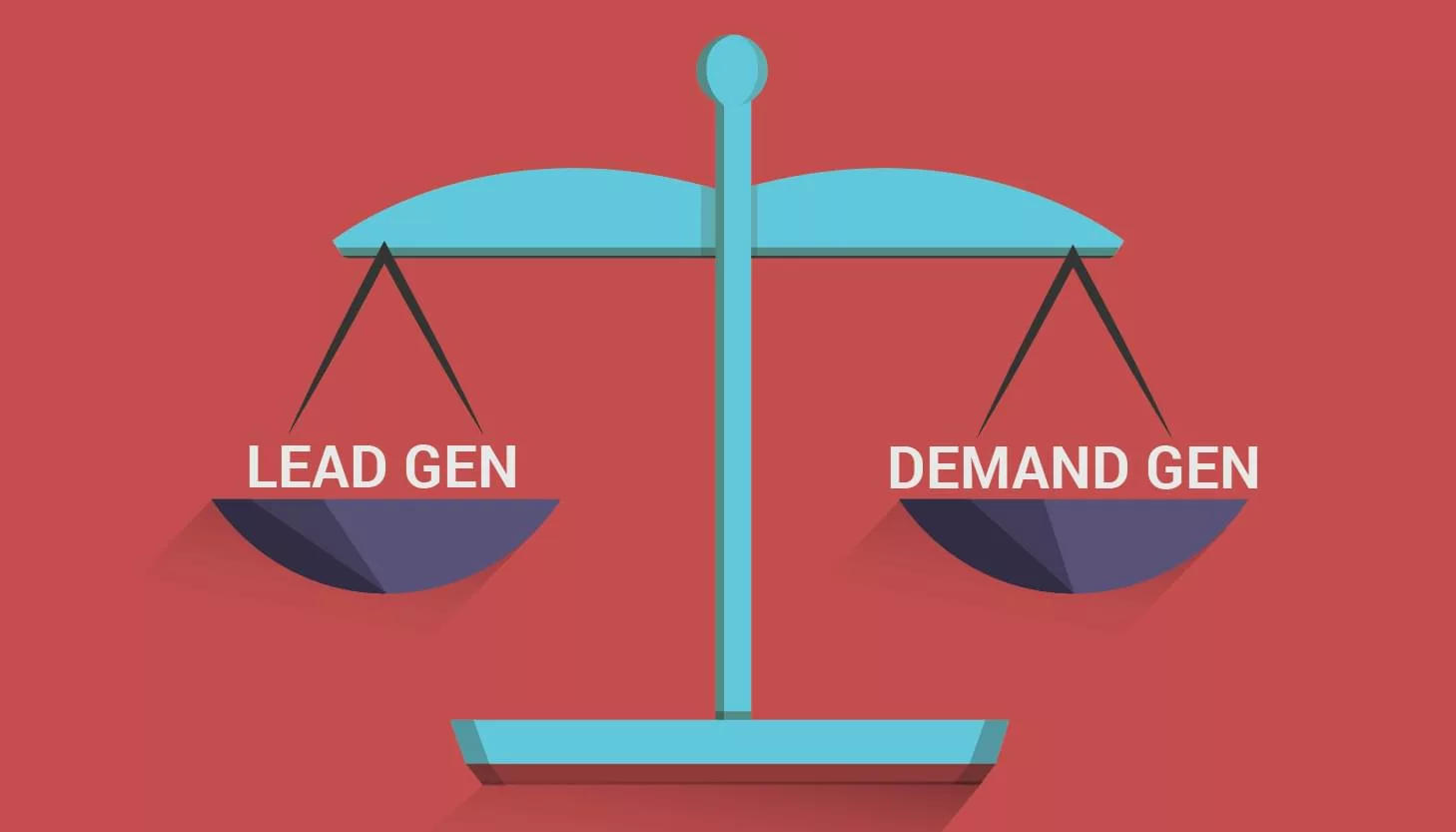Marketing strategies like lead generation vs. demand generation are extremely effective in bringing in new clients and generating excitement about products and services. Many B2B marketers realize the value and use them interchangeably in their campaigns. To achieve success, however, it is necessary to keep the two processes distinct from one another and to put them to use in sequential order.
In this article, we will be going over lead generation vs. demand generation. The first difference between the two is their definition.
What is the difference between lead generation and demand generation?
Lead generation focuses on attracting potential customers at the beginning of their buying journey, where you can introduce them to your brand and provide a positive first impression. This way, they are more likely to continue down the sales funnel and make a purchase. Some of the methods of lead generation include pay-per-click advertising, organic search engine optimization (SEO), content distribution deals, sponsored listings, white papers, etc., which can be used to collect leads’ digital contact details.
To maximize the number of visitors who fill out the form and receive the promised incentive—whether it be an ebook download or discount code—the creators of a lead generation campaign must pay close attention to the design of each form field.
Meanwhile, demand generation prioritizes audience segmentation in order to generate demand for a product or service that people may not yet be aware of. In order words, they are tailored to reach high-value actors within those segments using several channels, including but not limited to websites, email marketing campaigns, social media posts, regional marketing, etc.
How a company can benefit from the combination of lead generation and demand generation
Lead generation and demand generation are both essential elements of effective marketing. While lead generation identifies potential customers, demand generation focuses on generating interest in your products or services by targeting those who have not yet expressed an initial interest in your offer. By combining these two strategies, companies can boost their leads and create a more engaging customer experience with compelling content that speaks directly to their target audience’s needs.
Below are some other benefits of combining lead generation and demand generation.
- Leverage existing contacts
If a contact has previously engaged with your brand but has yet to convert, it may be because they needed to be shown stronger messaging during the earlier stages to compel them forward. This is where lead gen and demand gen come into play. Using insights from previous interactions between prospects and marketers will enable you to tailor your strategy. This way, they can speak more effectively to individuals and thereby increase conversion rates significantly.
- Create high-quality content tailored specifically for each segment
When crafting your message for each segment within your market, creating higher quality content based on data insights about past (and sometimes future) behaviors is key. Doing so allows you to reduce the unsubscribe rate, increase conversation rates, and boost returns on investment (ROI).
- Use automated processes
Automation can aid certain steps, such as populating forms used in preceding steps throughout the sales funnel. Also, tuning up trigger emails is a good way of ensuring increased user engagement. This can focus a prospect’s attention on particular services the business offers, as well as potentially unreleased ones, building anticipation amongst subscribers. Several lead-generation software helps brands to automate a lot of their tasks and generate quality leads.
How to Execute Successful Demand Generation & Lead Generation Campaigns
Reaching out to potential customers and starting interactions with them is the ultimate goal of any marketing plan. Any successful demand or lead generation campaign aims to generate sales-ready leads for a company’s sales team to pursue. This is accomplished by raising the brand’s profile, informing potential customers about the company’s products or services, piquing their interest, and so on.
However, effective demand and lead generation campaigns are challenging to craft and involve meticulous planning and tactical execution at every stage. Thriving demand and lead generation campaigns can be carried out by following these guidelines.
Identify Your Audience:
Create a profile of your ideal consumer by dividing your audience into subgroups according to location, interests, and occupation. This will allow you to show more relevant content/ads, and tailor your messages according to their profile.
Pay Attention To Quality Content:
Make content that is both interesting and educational for your target demographic, which will seem more valuable to them and bring you more attention. Messages can be disseminated far more rapidly if people are willing to share what they find valuable.
Measure Levels of Engagement:
Keep an eye on how many people are responding to your email and social media offers, and record the number of people who click through from your blog or website. You’ll have a vital feedback loop that will allow you to optimize your entire cycle for maximum efficiency. This will allow you to put your time and effort where it will do the best, increasing your profits.
Summary
Lead generation focuses primarily on gathering contact information from interested individuals. In contrast, demand generation is a higher-level, more broad method of generating interest.
However, executing successful demand and lead generation campaigns requires a detailed understanding of your target personas.

